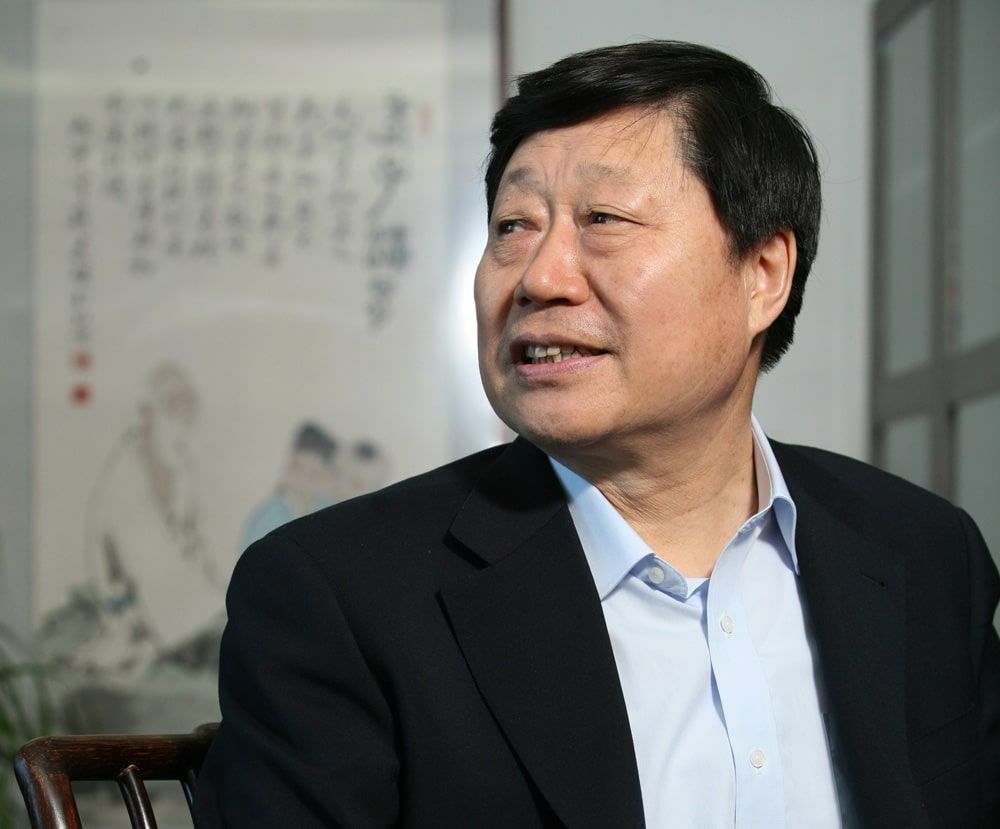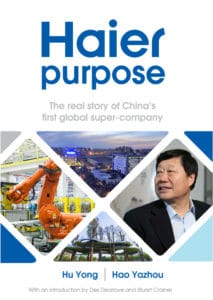
During the 1990s, in order to survive in the increasingly open and competitive market, Chinese companies focused on technology development and quality control, putting great effort into service, product image and so on. The result was that a number of domestic brands were gradually established that consumers felt comfortable buying.
At the same time, multinational companies began entering China. China’s actual utilized foreign investment soared from $10.3 billion in 1995 to $48.1 billion in 1995. With international competition coming into China, as soon as the products made by domestic enterprises left the factory, they were in fact entering an international market. But, at that time, domestic enterprise technology was of low level, product quality was poor, and competitiveness was weak. Coupled with market segmentation, the existing market space was narrowed down. All of these factors led to excessive market competition.
Under these circumstances, brand reputation became an intangible asset of the business, and the intangible content of outstanding domestic brands greatly increased. After becoming China’s number one brand for appliances, Haier discovered that they could use its brand as a core asset, and carry out restructuring, so that it could achieve high efficiency and quality at low cost.
In 1995, Zhang Ruimin transferred the 5,000 staff working at Haier Headquarters to the east of Qingdao High-tech Zone, and floated the concept of the ‘second breakthrough’. Relying on this young, positive energy, Haier began acquiring dormant or failing enterprises to bring them back to life. It merged with eighteen different enterprises, representing a total inventory of ¥500 million in losses and ¥1.8 billion in assets, turning all of them around. Haier used mergers to develop and enhance competitiveness. Its acquisitions included the Shunde Washing Machine Factory in Guangdong, Fenghua Refrigerator Factory in Guizhou, and the Huangshan Television Factory in Hefei. Through this diversification and expansion of scope, Haier was able to find a broader space for development.
Haier’s takeover targets all had common characteristics. The key point was that the technology, equipment and personnel quality were uniformly excellent in these companies, but they were mismanaged enterprises. Haier internally referred to this process as ‘eating shocked fish’.
Zhang Ruimin says: ‘The goal of mergers is to use the minimum possible capital investment to rapidly expand the scope of the business. After the merger, corporate profitability should not depend on injecting large amounts of money into the new business, otherwise it would be better to build a new enterprise from scratch; instead, the profit should come from making good use of our intangible assets, what we call brand operations, by inputting our culture and management. Our approach was that the merged enterprise would copy the model used at Haier.’
During the mergers, one of Haier’s main tools was its culture. When Haier merged with Red Star Electrical Factory, it produced washing machines, held net assets of only ¥100 million, and its losses amounted to ¥250 million. After the merger, Haier only sent three additional staff to Red Star and these were not from the Finance Department, but from the Corporate Cultural Centre. They continually talked with Red Star staff about Haier’s processes, and about their idea of applying Haier operational models to reactivate the factory. Apart from those three, the employees were all the same as before the merger, the equipment was still the original equipment, and the monthly loss in the month of the merger was ¥7 million. In the second month, the losses were reduced, in the fifth month, the company made a profit of more than ¥1 million.
The difficulties with mergers are never technology and capital, but cultural applicability. When Chinese enterprises make expansion mergers, what is often missing is a clear business philosophy, or to put it another way, a clear corporate culture.
This merger with culture model became a case study at Harvard Business School. When talking about the case of Haier-Red Star, Professor Lynn S. Paine said that in the past, a company’s performance was examined by its books, whereas now, it depended more on the company’s culture and the resulting cohesion, as this was the key to the company’s ability to undergo sustainable development. Successful companies should be studied because they wanted to know what good aspects of corporate culture influenced the company, which was of great significance to the subsequent business development.
‘The main factor in Haier’s success is its corporate culture,’ explains Professor Paine. ‘Of course, technical and capital support is also very important, but without the right culture, Haier was unable to turn the rigid and fixed assets into an inexhaustible source of value for every customer, employee, and investor and for society at large.’
Lynn Paine believes that Haier culture includes some key values that are shared by the world’s most ambitious companies:
A successful corporate culture is one in which all people truly feel they are valuable, and that the enterprise is socially responsible. Moral principles and ethical engagement are indispensable parts of corporate culture.
Paine says: ‘These factors may sound vague and simple, but their operation is extremely difficult, especially when companies and employees are accustomed to working around plans, while taking the initiative is not encouraged.’
Zhang Ruimin, reflecting on why this case was chosen for a Harvard Case Study, commented, ‘If your business is not very strong, then merging with a weak business could be crippling; if you are strong enough, and with good values and management, you will be able to transform a weak business, no matter how poor it is.’
Shunde Haier Electric Group Limited was a successful low-cost expansion made in 1997 based on the application of this corporate culture. Again, after announcing the joint venture, Haier Washing Machine Division assigned only three managers, but what they took with them were the management models and corporate culture developed over many years, along with strong research and development capacity. Six weeks later, the new company’s first washing machine came off the assembly line, bringing this shocked fish back to life. Amazingly, the Washing Machine Division sent to wake up the shocked fish was Red Star mentioned above. Haier subsequently replicated this management culture many times, activating the ‘shocked fish’ one after another.
Zhang Ruimin explains that the process of cultural integration was not always easy: ‘In one instance, Haier was merging with a television factory in Anhui. The merger took place in December 1997, and in that year the factory produced only 40,000 television sets; two years after the merger, they were producing 600,000 units. But in the beginning the merger was a strong collision. Enterprise workers went on strike and paraded in the streets because they could not accept Haier’s management. Although they had very low wages, they were able to avoid working while on duty. But now, even though the salaries had been increased, they felt the management was too strict. Was Haier’s management correct? We decided to postpone operations to discuss this issue for as long as it took. We had only discussed it with the employees for two days, when they recognized that if Haier did not succeed, they could not stand up in the market, and if the enterprise was untenable, employees would not receive any pay at all. Only when the company is successful can the employees do well. Through this discussion, many employees came to understand that it was not that Haier management was strict, but that market competition was harsh. In total we merged with eighteen companies, and the most difficult things to change were the original ideas held by the workers. However, if we could not change these concepts and ideas, it would be very difficult to run those companies successfully.’
In the process of diversification, Haier explored the theory that ‘the East shines first, then the West shines’. This means that you must first become bigger, better and stronger in the industries you are most familiar with and only then can you enter into new industries. After reaching a certain size, leaps must be made to reach the forefront of the new industries.
 In this way, Haier spent a second seven-year period, built on the basis of the success of the brand strategy development, creating a new strategy of innovation and transfer. Through extending corporate culture and following the ‘East shines first, then the West shines’ model of development, the company was able to successfully accomplished its diversification and expansion, starting from a branded product into a group of branded household appliance series.
In this way, Haier spent a second seven-year period, built on the basis of the success of the brand strategy development, creating a new strategy of innovation and transfer. Through extending corporate culture and following the ‘East shines first, then the West shines’ model of development, the company was able to successfully accomplished its diversification and expansion, starting from a branded product into a group of branded household appliance series.
This is an edited extract from Haier Purpose by Hu Yong and Hao Yazhou now available from Thinkers50 and Infinite ideas.

Thinkers50 Limited
The Studio
Highfield Lane
Wargrave RG10 8PZ
United Kingdom

Thinkers50 Limited
The Studio
Highfield Lane
Wargrave RG10 8PZ
United Kingdom

Thinkers50 Limited
The Studio
Highfield Lane
Wargrave RG10 8PZ
United Kingdom
| Cookie | Duration | Description |
|---|---|---|
| LANG | 9 hours | Linkedin set this cookie to set user's preferred language. |
| nsid | session | This cookie is set by the provider PayPal to enable the PayPal payment service in the website. |
| sp_landing | 1 day | The sp_landing is set by Spotify to implement audio content from Spotify on the website and also registers information on user interaction related to the audio content. |
| sp_t | 1 year | The sp_t cookie is set by Spotify to implement audio content from Spotify on the website and also registers information on user interaction related to the audio content. |
| tsrce | 3 days | PayPal sets this cookie to enable the PayPal payment service in the website. |
| x-pp-s | session | PayPal sets this cookie to process payments on the site. |
| __cf_bm | 30 minutes | This cookie, set by Cloudflare, is used to support Cloudflare Bot Management. |
| Cookie | Duration | Description |
|---|---|---|
| l7_az | 30 minutes | This cookie is necessary for the PayPal login-function on the website. |
| Cookie | Duration | Description |
|---|---|---|
| CONSENT | 2 years | YouTube sets this cookie via embedded youtube-videos and registers anonymous statistical data. |
| _ga | 2 years | The _ga cookie, installed by Google Analytics, calculates visitor, session and campaign data and also keeps track of site usage for the site's analytics report. The cookie stores information anonymously and assigns a randomly generated number to recognize unique visitors. |
| _gat_gtag_UA_10408481_1 | 1 minute | Set by Google to distinguish users. |
| _ga_ZP8HQ8RZXS | 2 years | This cookie is installed by Google Analytics. |
| _gid | 1 day | Installed by Google Analytics, _gid cookie stores information on how visitors use a website, while also creating an analytics report of the website's performance. Some of the data that are collected include the number of visitors, their source, and the pages they visit anonymously. |
| Cookie | Duration | Description |
|---|---|---|
| NID | 6 months | NID cookie, set by Google, is used for advertising purposes; to limit the number of times the user sees an ad, to mute unwanted ads, and to measure the effectiveness of ads. |
| test_cookie | 15 minutes | The test_cookie is set by doubleclick.net and is used to determine if the user's browser supports cookies. |
| VISITOR_INFO1_LIVE | 5 months 27 days | A cookie set by YouTube to measure bandwidth that determines whether the user gets the new or old player interface. |
| YSC | session | YSC cookie is set by Youtube and is used to track the views of embedded videos on Youtube pages. |
| yt-remote-connected-devices | never | YouTube sets this cookie to store the video preferences of the user using embedded YouTube video. |
| yt-remote-device-id | never | YouTube sets this cookie to store the video preferences of the user using embedded YouTube video. |
| yt.innertube::nextId | never | This cookie, set by YouTube, registers a unique ID to store data on what videos from YouTube the user has seen. |
| yt.innertube::requests | never | This cookie, set by YouTube, registers a unique ID to store data on what videos from YouTube the user has seen. |
| Cookie | Duration | Description |
|---|---|---|
| DEVICE_INFO | 5 months 27 days | No description |
| loglevel | never | No description available. |
| m | 2 years | No description available. |
Thinkers50 Limited has updated its Privacy Policy on 28 March 2024 with several amendments and additions to the previous version, to fully incorporate to the text information required by current applicable date protection regulation. Processing of the personal data of Thinkers50’s customers, potential customers and other stakeholders has not been changed essentially, but the texts have been clarified and amended to give more detailed information of the processing activities.